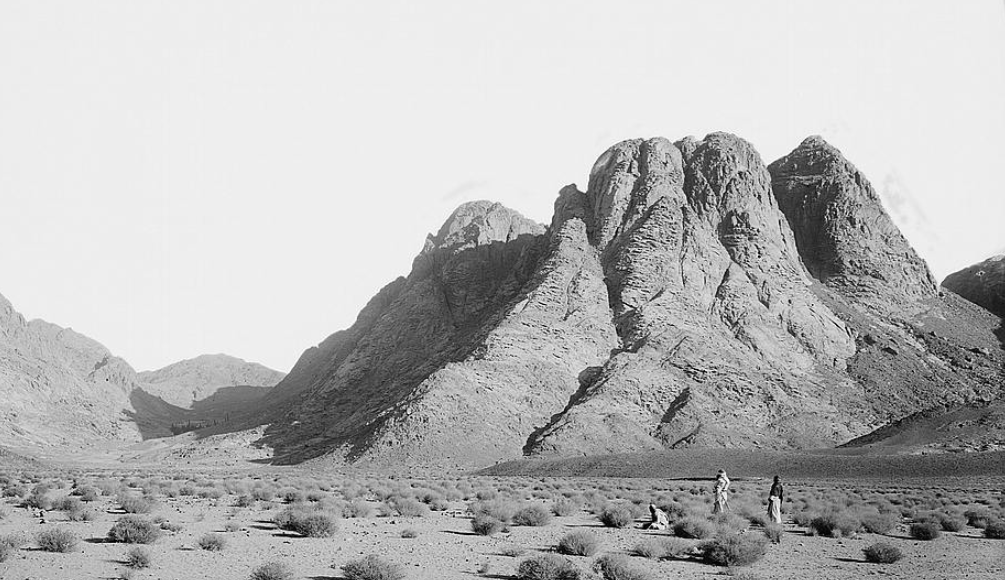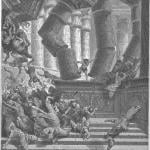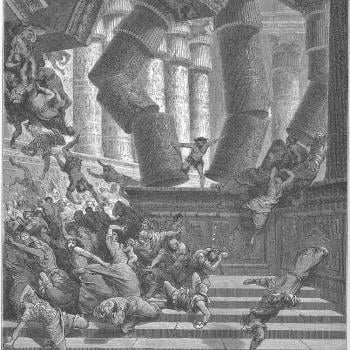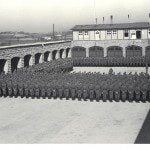
Most Bible scholars believe that Horeb is located in the current-day Sinai Peninsula: specifically a mountain range with three peaks, whereas Mt. Sinai is the specific peak where God appeared to Moses. Most scholars also hold that we can’t determine the particular peak with absolute certainty, but we can make a reasonable and plausible case for one of them, with the help of several fascinating biblical clues.
The impressive dark granite Gebel Musa (or, “Mount Moses”), standing 7,497 feet high, has been, historically, the peak most favored and assumed to be Mt. Sinai. St. Catherine’s Monastery, built in the year 527, stands at the foot of its north side. Mt. Catherine, the highest peak in the Sinai Peninsula, at 8,625 feet, lies to its southwest, and Gebel Safsafeh (also known as Willow Peak), 6,540 feet high, to its north. Does one of the three have more evidence in its favor? Mt. Catherine seems to have never been a candidate. But the Bible provides three reasons for favoring one of the remaining two over the other:
1) Exodus 19:2 in the Revised Standard Version, informs us that the entire traveling caravan of Israel camped “before” the mountain, or as many translations render it, “in front of” it. The Amplified Bible uses the terminology, “at the base of” the mountain.
2) The top of Mt. Sinai had to be able to be seen from the plain below. Exodus 19:11 reads, “on the third day the LORD will come down upon Mount Sinai in the sight of all the people.” And Exodus 24:17 states, “the appearance of the glory of the LORD was like a devouring fire on the top of the mountain in the sight of the people of Israel.”
3) It had to be easy to determine where Mt. Sinai started to rise, at its base. This may seem to be irrelevant, except that it was a matter of life or death, because God had set rules for how one is to regard a holy place, where God is present. In Exodus 19:12, He is recorded as saying, “do not go up into the mountain or touch the border of it; whoever touches the mountain shall be put to death.”
Using these criteria, what peak fits the bill? First, we must locate a massive plain at the base of it. There is, in fact a plain called er-Rahah, that is located right next to Gebel Safsafeh on its northwest side. The summit of Gebel Musa cannot be seen from this plain, because it’s three miles away. Gebel Safsafeh dramatically rises up from the plain some two or three thousand feet; in many places almost a perpendicular wall. In these spots one can both stand on the plain and touch the mountain at the same time (like the bottom of a skyscraper). This made it easy to observe the strict laws of purity that God had set for the Israelites.
In 1882, Dr. Henry Fields climbed to the summit of Gebel Safsafeh and immediately converted to a view that it was indeed Mt. Sinai. He stated: “when I looked down into the plain of Er-Rahah, I saw the conditions were met, and no longer doubted that I was standing on the holy mount.”
Sources
Dave Armstrong, The Word Set in Stone, Volume Two: More Evidence of Archaeology, Science, and History Backing Up the Bible (2024).
Dave Armstrong, The Word Set in Stone: How Archaeology, Science, and History Back Up the Bible (Catholic Answers Press: March 15, 2023, 271 pages).
Dave Armstrong, “In Search of the Real Mt. Sinai: Fascinating Topographical and Biblical Factors Closely Examined” (8-16-21).
[Archaeologist and evangelical Protestant] James K. Hoffmeier, Ancient Israel in Sinai: The Evidence for the Authenticity of the Wilderness Tradition (New York, Oxford: Oxford University Press, 2005; chapter 6: “The Mountain of God”: pp. 111-148)
“Mount Sinai,” Wikipedia.
“Sinai. Wady er-Raha (Plain of the Law) from Ras Safsaf,” Library of Congress photograph (view of the er-Raha plain from the top of Gebel Safsafeh).
“Sinai. Panorama of the Central Sinai Mountains from Wady er-Raha,” Library of Congress photograph (view of Gebel Safsafeh from the er-Raha plain); photograph at the top of this article.












